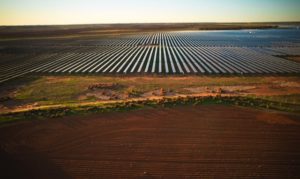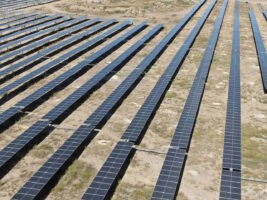Kangaroo Island has lost its first-of-a-kind challenge to a network investment decision, but in doing so has highlighted some of the major problems around the rules and regulations used to justify regulated investment in poles and wires.
As we reported in March, the Kangaroo Island administrator and council launched an unprecedented challenge against SA Power Networks over its decision to effectively close an opportunity for the island to become a major exporter of renewable energy. It was the first time a Regulatory Investment Test (RiT-D) has been disputed in such a way.
The dispute was over a decision by SAPN to build only a 33kV cable between the mainland and the iconic tourist island, rather than spending a few million more and allowing the cable to be upgraded to a 66kV link, providing the opportunity for the island to export renewable energy.
The AER upheld the SAPN decision, but not without first giving the network operator a slap around the chops for the way it justified the investment. It also highlighted problems with the narrow definition that such regulated investment decisions are made. It recommends changes.
This is an important development. For years, many analysts have complained that the regulatory tests are too inflexible, and allow network operators to ignore alternatives and simply reinforce, or “gold plate,” their investment. Some networks have also complained that the narrow rules prevent them from seeking alternatives, such as localised micro-grids.
Many in the Kangaroo Island community had hoped that the decision on whether to replace the ageing cable would lead to an opportunity for the island to generate its own power – mostly through renewables – while maintaining a link with the mainland.
But SAPN decided that a new cable was the most economically efficient option, and would cost only $25 million, effectively undercutting the 100% renewable energy plan. But it rejected an option for a 66kv cable that could carry more capacity, and would cost just $1.9 million more.
The island commissioner and the council protested, saying that SAPN had failed to take into account higher demand forecasts, from its own tourism outlook, and other benefits such as increased jobs from local renewable energy generation and avoided fuel costs from having local, or decentralised generation (wind and solar).
The AER criticised aspects of SAPN’s assessment, particularly in the way it considered the 66kV option and the wide range of values it put on the cable replacement, which AER said was not in line with the best industry practice.
But its most impactful observation may be on the way the rules are framed. The AER suggested that the exclusion of “other market benefits” such as jobs and avoided fuel costs should be changed.
This could have a significant impact on the way such proposals are considered in the future, particularly in “edge-of-the-grid” options where the cost of network replacement can be prohibitive, and the obvious solution is decentralised energy, and a combination of wind, solar, storage and micro-grids.
“We note our consultant’s comments regarding the RIT-D and the inability of stakeholders, or indeed us, to propose additional market benefit categories or review the decision of a RIT-D proponent not to include additional benefit categories,” the AER noted.
“Given the rising trend of distributed generation, we consider that the RIT-D Application Guidelines may benefit from revision in relation to the potential for other market benefits to arise (particularly avoided fuel costs).”
Chris Dunstan, from the Institute of Sustainable Futures in Sydney, which did analysis on a possible 100 per cent renewable energy scenario for Kangaroo Island, says that if the rules were different then there could have been a different outcome.
It would have allowed proponents to make a different decentralised offer, underlining the local benefits to the island.
Still, Dunstan says, the AER’s conclusions provide hope that the rules could change, and could be significant for the proposed demand response incentive scheme, which looks at efficient demand-side options, rather than the traditional supply side that has dominated Australian energy investment.
The result, however, will be of little comfort to the Kangaroo Island campaigners, and Dunstan laments the case as a missed opportunity to develop Kangaroos Island as landmark example of renewable end decentralised energy.











